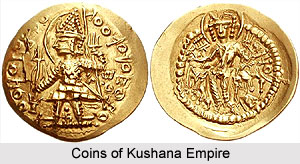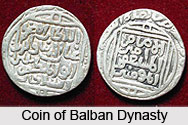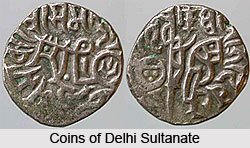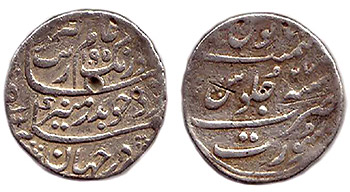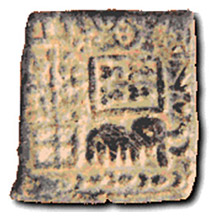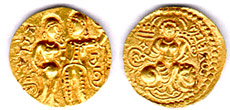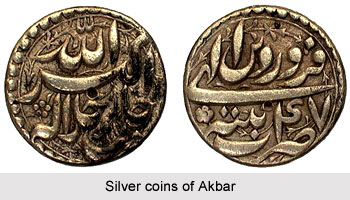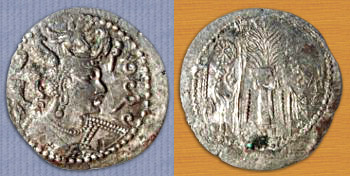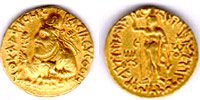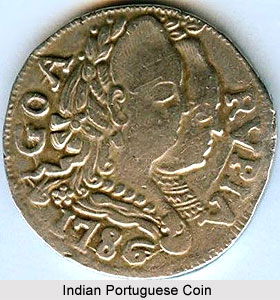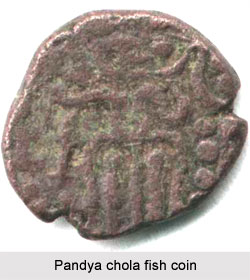 The Pandyas had issued silver punch marked and die struck copper coins in the early period. They had a chequered history during this period. They were in constant struggle with the Pallavas in the area of Tanjore district.
The Pandyas had issued silver punch marked and die struck copper coins in the early period. They had a chequered history during this period. They were in constant struggle with the Pallavas in the area of Tanjore district.
In the ninth century A.D., they emerged victorious only to fall again during the eleventh twelfth centuries A.D. under the domain of the Cholas. In the thirteenth century the Pandyas were the leading Tamil state but gradually declined in power. A few gold coins were attributed to the Pandya rulers of this period. These coins bore the image of a fish, sometimes singly, sometimes in pairs along with symbols like a bow, a conch, a discus etc. Some of the coins had the inscription of the words `Pandava Narapa` in Kannada and `Sri Pandya Dhananjaya` in Nagari or in Telegu. The former was attributed to Maravarman Sundara Pandya I (1216-1235 A.D.) or to Jatavarman Sundara I (1215-1270 A.D) and the latter to Maravarman Sundara Pandya II (1238-1253 A.D). The coins with the latter inscriptions had been found in the Kanara district. So some scholars were inclined to attribute them to the Alupa rulers.
The copper coins of the Pandyas, besides the fish emblem also included the Chola standing figure or the Chalukyan devices associated with a fish. The blending of the symbols of various dynasties on the Pandyan coins, were perhaps indicative of their conquests and defeats. A few of these coins bore the names Sundara, Sundara Pandya or merely the letter `su` were etched. Some of the coins bore a boar with the doubtful legend `Vira-Pandya` on one side and the figure of Venu -Gopala(Murlidhara Krishna) on the flip side of the coin.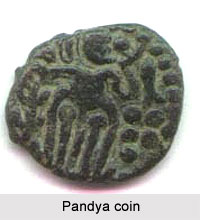 It had been said that those coins were issued by the Pandyas and the feudatories of the Cholas but could not be attributed to any particular king. Some of the coins depict the titles of the rulers, but only few of them were attributed to any particular ruler with the help of the inscriptions. The coins of Pandyas were basically square. Those coins were etched with elephant on one side and the other side remained blank. The inscription on the silver and gold coins during the Pandyas, were in Sanskrit and the copper coins bore the Tamil legends.
It had been said that those coins were issued by the Pandyas and the feudatories of the Cholas but could not be attributed to any particular king. Some of the coins depict the titles of the rulers, but only few of them were attributed to any particular ruler with the help of the inscriptions. The coins of Pandyas were basically square. Those coins were etched with elephant on one side and the other side remained blank. The inscription on the silver and gold coins during the Pandyas, were in Sanskrit and the copper coins bore the Tamil legends.
The coins of the Pandyas, which bore the fish symbols, were termed as `Kodandaraman` and `Kanchi Valangum Perumal`. The Chola standing and the seated king type coins had the titles `Bhutala Ellamthalai`, `Parasurama`, `Kulasekhara`. Apart from these, `Ellamthalaiyanam` was seen on coins which had the standing king on one side and the fish on the other. `Samarakolahalam` and `Bhuvanekaviram` were found on the coins having a Garuda, `Konerirayan` on coins having a bull and `Kaliyugaraman` on coins that depict a pair of feet.
